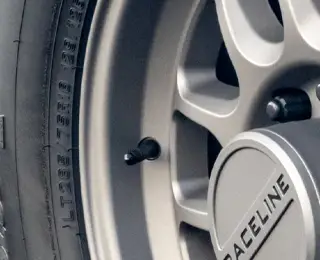Valve Stems: Maintenance and Safety
Today’s cars and trucks are packed with some impressive technology. But one part of every vehicle, whether you drive something electric or gas-powered, hasn’t changed much since its invention in 1891. The lowly yet universally essential tire valve stem has been around for well over 100 years. The only update it got was in 2007, when the US Congress required TPMS (Tire Pressure Monitoring System) devices be added to the tire pressure valves of all new passenger cars and light trucks. Let’s take a look at those valve stems, how they work, why you need tire valve caps, and how Les Schwab can help ensure your TPMS system is properly calibrated and your valve stems are there when you need them.
What is a Tire Valve Stem & How Does It Work
You’ll find a valve stem on every wheel and tire assembly on your vehicle. That valve allows you to add and remove air from your tires. As the gateway for air to enter and leave your tire, it plays a crucial role in fuel and range efficiency, tire longevity, as well as your overall safety. Without the proper air pressure in your tires, your range and MPG will suffer and steering and stopping will not be as responsive, which can be a problem.

The valve stem and TPMS sensor consist of five main parts. These include the valve cap (protects the valve stem from dirt and debris), valve core (regulates air pressure), valve stem (the tunnel that delivers air into the tire), TPMS sensor, and a small screw to hold that sensor in place.
To ensure those valve stems do their job, it’s important to check on them once in a while. When you do, look for cracks in the stem, watch for issues with your TPMS sensors (appearing as low tire pressure on your dashboard sensor), and always have a cap on the valve stem to keep the core clean and water out of your tires.
The professionals at Les Schwab inspect valve stems whenever a tire service is performed. Whether it’s a free pre-trip safety check or getting your tires rotated, we’ll make sure yours looks okay. If there are any issues, we have the expertise to replace them.
Types of Valve Stems
Your vehicle will likely have one of four different tire pressure valve stems depending on what you drive.
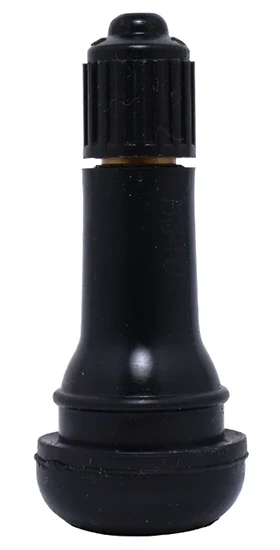
Rubber Valve Stem
These valve stems are found on most passenger cars and light trucks. They are flexible, affordable, and can hold back an air pressure of up to 65 PSI (pounds per square inch), which is most vehicles on the road.
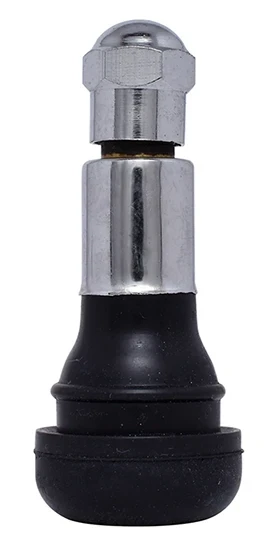
Chrome-Sleeve Rubber Valve Stem
These valve stems are all about style. The chrome sleeve covers a regular rubber valve stem. They still hold back up to 65 PSI, and work in exactly the same way as the standard rubber valve stem.
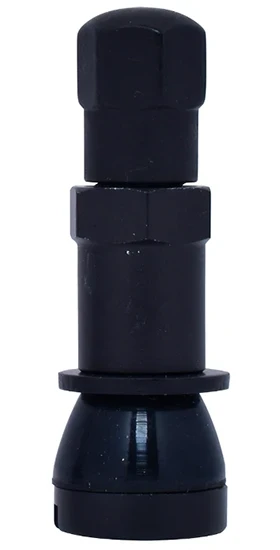
High-Pressure Valve Stem
These stems are used on heavy-duty commercial trucks as well as some rugged light trucks built to haul heavy loads and tow bigger trailers. These are found on tire and wheel assemblies that exceed 65 PSI.

High-Performance Metal Valve Stem
These valve stems are slightly different from the others, using a nut and rubber grommet. High-performance metal valve stems are built for sports cars and race cars that need durable valve stems.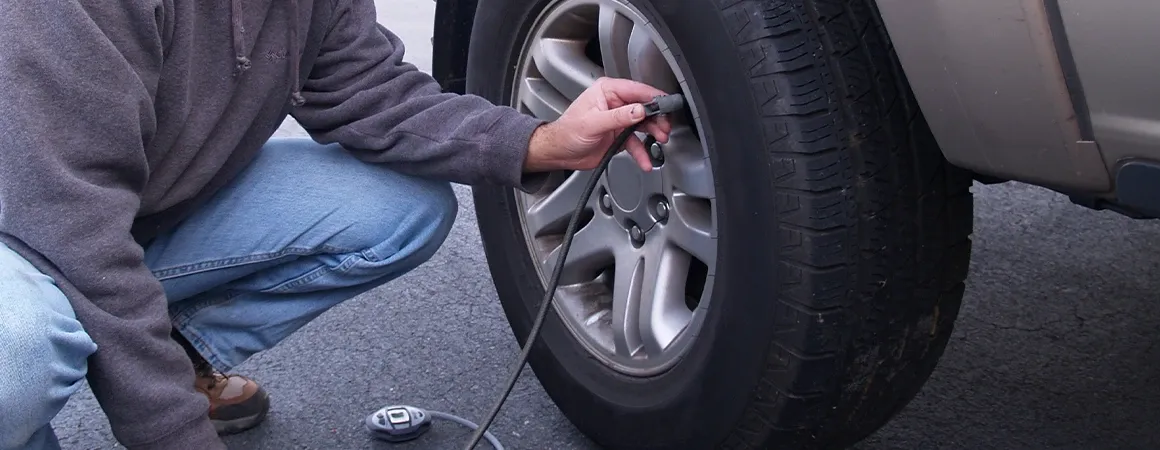
Why Valve Stem Maintenance is Important
Working tire valve stems, and good-fitting caps are important in maintaining the proper air pressure in each of your tires. That air pressure helps maximize your MPG and range, as well as maintain proper control and stopping power.
Without the proper tools and safety equipment, there isn’t a lot you can do about a faulty valve stem or TPMS sensor on your vehicle. But you should give them a quick inspection every time you check the tread on your tires (once a month or so). When inspecting your valve stems, look for cracks on the rubber portion of the stem. Don’t forget about the spare tire. If you find cracks or the rubber feels rigid, get to Les Schwab for a free visual inspection. Want to go above and beyond? Apply a light coat of silicone-based lubricant to the rubber of each of your valve stems once a year. This could give yours added life, saving you some money.
When you buy your tires at Les Schwab, you get America’s Best Tire Warranty. You also get the attention of our professionals who will give your TPMS sensors and valve stems a close examination and replace anything that is worn or no longer working.
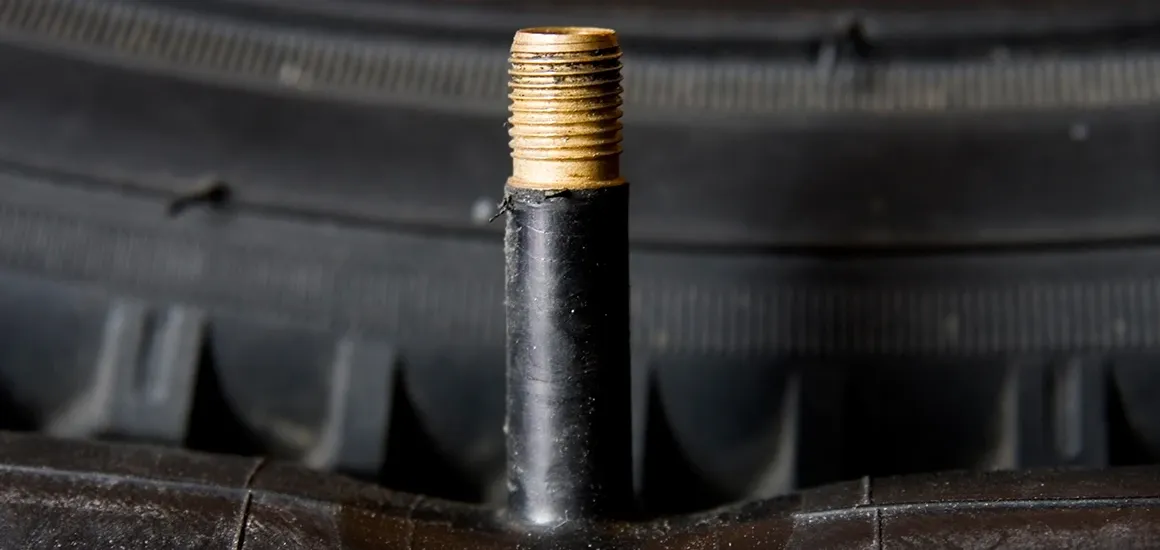
Key Aspects of Valve Stem Maintenance
Every time you buy new tires, the professionals at Les Schwab will give your valve stems and TPMS sensors a quick inspection and replace any parts that are worn or not working.
Regular Inspections
Between new tires, your job is to keep a plastic valve cap on each of the stems and keep an eye out for valve stem cracking and air leaks. Why plastic? While chrome and metal caps look great and can even match the color of your car, the metal can cause corrosion in the valve stem, causing the cap and stem to fuse together, which can make adding air a problem.
Additionally, keep your tires properly inflated or stop by, and we’ll top off the air for free when you have Les Schwab tires on your vehicle. Finally, store your vehicle in a garage or under a cover to keep the weather and sunlight off the tires. This can help prolong the life of your tires and the tire valve stems.
If your valve stem needs replacing, Les Schwab has the experience to get it done right. We’ll replace the entire valve stem, including the valve cap, core, stem, and TPMS sensor (if it is not working).
Safety Precautions
Because tires are filled with pressurized air, removing or manipulating the valve stem can be dangerous. The Professionals at Les Schwab have the tools and know-how to inspect and replace your valve stems safely and accurately.
Not Sure About Valve Stem Maintenance? Trust Les Schwab.
Valve stem issues can cause problems with your tire pressure, which can affect your overall MPG and range, safety, and more. The next time you stop by Les Schwab, ask us to give your tires and valve stems a quick inspection. That includes scanning your TPMS sensors. We’ll take a look and offer any recommendations to get you safely back on the road.
What you need to know

Are Nitrogen-Filled Tires Worth the Cost?
Wondering whether nitrogen-filled tires are worth the money? Here’s your answer.

Slow Tire Leak Causes & What to Do
Uncover the secrets behind slow tire leaks, including common causes like punctures and valve issues, and master the art of leak detection, repair, and prevention from Les Schwab.

How to Choose the Right Tires for Towing
Choosing the right tires for towing ensures safety & stability on the road. Discover top tips and recommendations for optimal towing performance at Les Schwab.

